Structure, Characteristics and Uses of P-Channel MOSFET in the Electronic Field
2024-05-16
12331
Catalog

Figure 1: P-channel MOSFET
Basic Concepts of P-Channel MOSFET
A P-channel MOSFET is a transistor that uses holes (positively charged carriers) to conduct electricity. Unlike N-channel MOSFETs, which use electrons, P-channel MOSFETs rely on the movement of these holes. The transistor operates in two modes: enhancement mode and depletion mode.

Figure 2: P-channel MOSFET
P-channel MOSFET has a specific structure. There is a P-type channel region between the source (S) and drain (D). The body of the transistor is made of N-type material. The source and drain regions are composed of heavily doped P-type materials and are called P+ regions. Above these areas is the gate, which is separated from the channel by a thin oxide layer. This oxide layer prevents direct contact between the gate and channel while also controlling the flow of current.
When operating a P-channel MOSFET, the sequence of interactions must be understood. First, applying a voltage to the gate affects the oxide layer, regulating the current flowing through the channel. In enhancement mode, a negative gate voltage increases the number of holes, allowing current to flow. In depletion mode, a negative gate voltage reduces the number of holes, thus limiting the current flow. This precise control of current flow makes P-channel MOSFETs important components in a variety of electronic circuits.

Figure 3: Enhancement Mode Symbol for P-Channel MOSFET

Figure 4: Depletion Mode Symbol of P-Channel MOSFET
Working Principle of P-Channel MOSFET
P-channel MOSFETs use holes as their primary charge carriers, while N-channel MOSFETs use electrons. The lower mobility of holes compared to electrons affects the performance of P-channel MOSFETs. To initiate the flow of holes in a P-channel MOSFET, a negative voltage (Vgs) must be applied between the gate and source, unlike the positive voltage required for an N-channel MOSFET.
Applying a negative voltage to the gate of a P-channel MOSFET affects the gate first. This negative voltage repels electrons from the region directly below the channel region into the N-type substrate. This effect creates a depletion region at the interface between the P-type channel and the N-type substrate. As the negative voltage increases, more electrons are pushed away, allowing holes to accumulate in the channel region. These holes mainly come from the highly doped P-type source and drain regions.
As holes accumulate in the channel, a continuous conductive path is established, allowing the P-channel MOSFET to turn on. Holes can then flow freely between the source and drain, allowing current to flow through the transistor.
Small adjustments in gate voltage directly affect the switching state of the transistor. The operator activates the transistor by carefully reducing the voltage difference between the gate and the source. The process is simple and responsive, allowing precise control of the current flowing through the MOSFET.
Characteristics of P-Channel MOSFET
P-channel MOSFET is a voltage-controlled field-effect transistor. Its operation depends entirely on the voltage applied to the gate. By adjusting the gate voltage, designers can precisely control the conduction state of the transistor, making P-channel MOSFETs highly adaptable to a variety of circuit designs.
P-channel MOSFETs exhibit very high input impedance. This means that only a small current is required at the gate to control a larger current between the source and the drain. This feature is particularly useful in low-power circuit designs because it enables efficient current control with minimal power consumption.
To activate a P-channel MOSFET, a negative voltage must be applied to the gate. This negative voltage repels electrons out of the channel region, allowing holes to accumulate and form conductive paths. There is a direct correlation between the applied gate voltage and the conductivity of the channel. By closely monitoring these voltage changes, precise control of the MOSFET behavior can be achieved.
Although P-channel and N-channel MOSFETs share the same characteristics such as voltage control and high input impedance, they differ in substrate type and operating voltage. P-channel MOSFETs use a P-type substrate and require a negative voltage to activate. In contrast, N-channel MOSFETs use an N-type substrate and require a positive voltage. This means that operators must consider reverse polarity and voltage direction when using P-channel MOSFETs.
The operator must pay close attention when adjusting the gate voltage, as even small changes can significantly affect the transistor's performance. For example, when fine-tuning the voltage to achieve a specific conductive state, operators can observe the transition from fully off to gradually on. This direct and responsive control enables precise circuit debugging.
Types of P-Channel MOSFETs
P-channel MOSFETs are mainly divided into two categories: enhancement mode and depletion mode. Each type has a unique structure and working principle.
Enhancement Mode P-Channel MOSFET
Enhancement mode P-channel MOSFETs consist of a lightly doped N-type substrate and two heavily doped P-type regions that serve as source (S) and drain (D) respectively. The distance between these regions is the channel length (L). The channel is covered with a thin layer of silicon dioxide, which acts as a dielectric layer, and an aluminum gate (G) sits on top of it.

Figure 5: P-Channel Enhancement Mode MOSFET
When a negative voltage is applied to the gate, holes accumulate under the dielectric layer due to the capacitive effect. This charge accumulation drives the movement of electrons in the N-type substrate, forming a conductive channel. Applying a negative voltage to the drain reduces the voltage difference between the gate and drain, thereby narrowing the conductive channel and allowing current to flow from the source to the drain. The cross-section of the channel depends on the gate voltage, allowing precise control of the source-to-drain current. This precise control makes enhancement-mode P-channel MOSFETs ideal for applications requiring precise current regulation.
Depletion Mode P-Channel MOSFET
Depletion mode P-channel MOSFETs have a prefabricated P-type channel. When a negative voltage is applied to the gate, it attracts electrons from the N-type substrate to the P-type channel, creating a conductive state. By applying a reverse bias to the drain voltage, the device turns on immediately. As the drain voltage increases, a depletion layer forms and expands within the channel. This depletion layer is composed of holes and minority carrier electrons, thereby affecting the conductivity of the channel. By adjusting the gate voltage, the width of the depletion layer can be controlled, thereby regulating the current in the channel.

Figure 6: P-Channel Depletion MOSFET
Controlling the gate voltage manages the behavior of the MOSFET. In enhancement mode, precise adjustment of the negative voltage is required to finely control channel formation and current flow. In depletion mode, the focus shifts to managing the depletion layer within the channel by adjusting the gate voltage to effectively control the current flow. These operations require acute sensitivity to subtle voltage changes and a thorough understanding of the physical and electrical behavior of MOSFETs.
Failure Modes of P-Channel MOSFET
P-channel MOSFETs, while stable and reliable, can fail under certain conditions. Major failure modes include overheating, battery failure, avalanche failure, and voltage rate (dV/dt) failure. It is important to understand and prevent these failures, especially in high-stress environments.
Overheating fault: When the current is too high, the internal temperature of the P-channel MOSFET will rise rapidly. Without proper heat dissipation, this high temperature can damage the physical structure of the MOSFET. Ensure effective thermal management through adequate cooling systems during design and maintenance. This includes properly configured heat sinks and thermal management solutions. Monitor temperatures regularly to prevent overheating.
Battery failure: Unstable power can interfere with MOSFET operation. Voltage fluctuations (too high or too low) can cause malfunctions. To avoid this, regularly monitor battery status and implement a reliable power management system to maintain stable voltage levels.
Avalanche Failure: In high-voltage applications, exceeding the voltage capability of the MOSFET may result in avalanche failure. This often results in a high current discharge that permanently damages the MOSFET. Mitigate this risk by selecting components with appropriate voltage ratings and using voltage stabilization measures such as Zener diodes.
dV/dt fault: A dV/dt fault occurs when the rate of voltage change is too high. Rapid voltage fluctuations can destabilize the internal charge, causing damage. To prevent dV/dt failures, add filtering and harmonic cancellation components (such as capacitors and inductors) to your circuit design. These components slow down the rate of voltage changes.
Other influencing factors: Other factors that can negatively affect MOSFETs include motor seizure, rapid acceleration or deceleration, excessive power dissipation, and overcurrent. Implement safety measures such as overcurrent protection and short-circuit protection to prevent these problems from occurring.
Maintain optimal condition: Regularly inspect MOSFETs and their surrounding circuitry to ensure all components are operating within specified electrical parameters. Use high-quality components and follow solid circuit design principles to prevent failure. These strategies will improve P-channel MOSFET lifetime and reliability.
How to Test P-Channel MOSFET
When testing P-channel MOSFETs in complementary MOSFET switching circuits in motor control systems, follow these detailed steps to ensure proper functionality and performance.

Figure 7: P-channel MOSFET
Prepare the Circuit Board
Mounting MOSFETs: Mount P-channel and N-channel MOSFETs onto the circuit board.
Connecting Power: Using a dual power supply system, connect +VDD and -VDD to appropriate points on the circuit.
Connect the motor: Connect one end of the motor to the common drain of the two MOSFETs and the other end to the ground reference of the circuit.
Preliminary Testing
Set the input voltage to low: Start with a low input voltage.
Observe the motor rotation: When the P-channel MOSFET is on and +VDD is powered, the motor should rotate in one direction.
Measure the voltage: Use a multimeter or oscilloscope to measure the voltage between the source and drain of the P-channel MOSFET. In the on state, the voltage should be close to zero.
Reverse Testing
Set input voltage to high: Adjust the input voltage to a high level.
Watch the motor rotate again: the motor should now rotate in the opposite direction, indicating that the P-channel MOSFET is turned off.
Measure the voltage again: measure the source and drain voltages of the P-channel MOSFET. In the off state, this voltage should be higher than in the on state.
Troubleshooting Motor Direction Problems
Check for a short or open circuit: If the motor is not spinning as expected, check the MOSFET for a short or open circuit.
Verify connections: Make sure all connections are secure and correct.
Ensure full shutdown: If the P-channel MOSFET does not fully shut down, verify that the input voltage is sufficient and there is no interference.
Check for other components: Check for any damaged or misconfigured components that may affect the operation of the MOSFET.
Use a Digital Multimeter to Test the P-Channel MOSFET
Testing P-channel MOSFETs using a digital multimeter is simple and effective. Please follow these detailed steps to get accurate results.

Figure 8: P-channel MOSFET
Set the diode test range: Adjust the digital multimeter to the diode test range. This setup helps measure potential current leakage or short circuits in MOSFETs.
Place the MOSFET: Place the P-channel MOSFET on a non-conductive surface, such as a wooden table. Make sure the device's label is facing up so you can easily identify each pin.
Shorted drain and gate: Use the multimeter's probe (red or black) to short the drain and gate. This step releases all internal capacitance and prevents stored charge from affecting test results.
Connect the probes: Connect the red probe to the source and the black probe to the drain.
Read the multimeter: The multimeter should read "OL" or infinity, indicating that the MOSFET is off without gate excitation.
Apply negative voltage: Keep the red probe on the source and move the black probe to the gate, hold for a few seconds to apply sufficient negative voltage.
Check conductivity: Move the black probe back into the drain pipe. The multimeter should show a low resistance value or emit a continuous beep, indicating that the MOSFET is conducting.
Check for problems: If the multimeter does not show low resistance or continuity when moving the black probe from the gate to the drain, this may indicate a faulty MOSFET.
Check for damage: Check the MOSFET for obvious signs of damage or scorch marks to determine if it needs to be replaced.
Advantages and Disadvantages of P-Channel MOSFET
P-channel MOSFETs are widely used in electronic designs due to their unique performance characteristics. Here are the detailed pros and cons.
Advantages
Simple design: P-channel MOSFETs are ideal for space-constrained applications such as miniaturized low-voltage drivers and non-isolated point-of-load (POL) power supplies. Their simple design makes integration into compact circuits easy.
High-Side Switching: In high-side switching applications, P-channel MOSFETs simplify gate drive requirements. They accept positive supply voltages directly, often reducing overall system cost.
Efficient Operation: P-channel MOSFETs are very efficient in low-voltage applications due to their low channel resistance and high conductivity, making them suitable for energy-saving designs.
High input impedance and fast response: P-channel MOSFETs offer higher input impedance and faster response times than junction field-effect transistors (JFETs), making them ideal for fast-switching applications.
Disadvantages
Sensitivity to static electricity: The thin oxide layer in P-channel MOSFETs makes them highly sensitive to static electricity. They are easily damaged by electrostatic discharge (ESD) and require careful handling and strong anti-static measures.
High voltage limitations: P-channel MOSFETs are less stable in high-voltage applications than N-channel MOSFETs. Their physical structure cannot withstand high voltages, limiting their performance in such environments.
Thermal Management: Although P-channel MOSFETs operate efficiently at low voltages, they generate significant amounts of heat in high-power applications. Effective thermal design is necessary to prevent performance degradation or damage due to overheating.
When integrating P-channel MOSFETs into your design, consider the following:
Circuit layout: Make sure the layout can effectively dissipate heat, using a heat sink or thermal pad as needed.
Handling: Always use anti-static wrist straps and mats when handling MOSFETs to prevent ESD.
Voltage Rating: Choose a voltage-rated MOSFET suitable for your application to avoid instability.
Testing and Verification: Regularly test and verify the performance of MOSFETs in the circuit, especially under high-stress conditions.
Conclusion
As an important electronic component, P-channel MOSFET is widely used in circuit design and has many advantages. By understanding its basic principles, characteristics, and types, it can be better applied in actual circuits. At the same time, by mastering common failure modes and testing methods, the reliability and stability of the circuit can be effectively improved. However, P-channel MOSFETs also have some shortcomings, especially stability issues in high-voltage environments, which need to be fully considered by designers during application. In general, P-channel MOSFET is still an indispensable key component in the design of low-voltage high-efficiency circuits. Through reasonable design and application, its advantages can be fully utilized to improve circuit performance.
Frequently Asked Questions [FAQ]
1. How to use p-MOSFET as a switch?
P-MOSFET is often used as a switch. The main operating steps are as follows:
Make sure the source of the p-MOSFET is connected to the positive terminal of the power supply.
The load is connected between the drain and the negative terminal of the power supply.
When the gate is at a negative voltage relative to the source (that is, the voltage is lower than the source voltage), the p-MOSFET turns on.
When the gate voltage increases close to the source voltage, the p-MOSFET turns off, cutting off the current.
When operating, be careful not to exceed the maximum withstand voltage and current specifications of the MOSFET to avoid damage.
2. What is the difference between N and P MOSFETs?
Different polarities: The carriers of N-type MOSFET are electrons, while the carriers of P-type MOSFET are holes.
Working mode: N-type MOSFET turns on when the gate voltage is higher than the source, and P-type MOSFET turns on when the gate voltage is lower than the source.
Application direction: Since the electron mobility of N-type MOSFET is higher than that of holes under the same conditions, N-type MOSFET usually has better performance and efficiency and is more used in high-performance applications.
3. Why is MOSFET better than BJT?
High input impedance: MOSFET is a voltage-controlled device and almost no current flows into its gate, while BJT is a current-controlled device and requires input current.
High efficiency: MOSFET has a fast switching speed and low power consumption, making it more suitable for high-frequency applications.
Good thermal stability: MOSFET has smaller thermal feedback and is more suitable for high-temperature environments.
Easy to drive: Due to the high input impedance, MOSFETs are easier to drive directly from logic levels.
4. What is the difference between P-channel MOSFET enhancement and depletion?
Default state: Enhancement mode P-channel MOSFET is off by default when there is no gate voltage, while depletion mode P-channel MOSFET is on by default when there is no gate voltage.
Gate control: Enhancement-mode MOSFET requires a negative voltage to turn it on and a positive voltage to turn it off; the depletion-type MOSFET, on the contrary, requires a positive voltage to turn it off and a negative voltage to turn it on.
The choice between these two types depends on the needs of the specific application. The enhanced type is more common in switching circuits, while the depletion type is used in certain analog circuits.
 ABOUT US
Customer satisfaction every time. Mutual trust and common interests.
ABOUT US
Customer satisfaction every time. Mutual trust and common interests.
function test. The highest cost-effective products and the best service is our eternal commitment.
Hot Article
- Are CR2032 and CR2016 Interchangeable
- MOSFET: Definition, Working Principle and Selection
- Relay Installation and Testing, Interpretation of Relay Wiring Diagrams
- CR2016 vs. CR2032 What’s the difference
- NPN vs. PNP: What's the Difference?
- esp32 vs stm32: which microcontroller is better for you?
- LM358 Dual Operational Amplifier Comprehensive Guide: Pinouts, Circuit Diagrams, Equivalents, Useful Examples
- CR2032 VS DL2032 VS CR2025 Comparison Guide
- Understanding the Differences ESP32 and ESP32-S3 Technical and Performance Analysis
- Detailed Analysis of RC Series Circuit
 TMAP Sensors - Definition and How They Work
TMAP Sensors - Definition and How They Work
2024-05-20
 From Theory to Practice: Utilizing Zener Diodes for Reliable Overvoltage Protection
From Theory to Practice: Utilizing Zener Diodes for Reliable Overvoltage Protection
2024-05-15
Hot Part Number
 MAL212856108E3
MAL212856108E3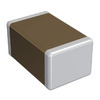 GRM219R61A475KE34D
GRM219R61A475KE34D TMK316B7225KL-T
TMK316B7225KL-T CGA1A2X7R1E151K030BA
CGA1A2X7R1E151K030BA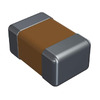 08055A4R3CAT2A
08055A4R3CAT2A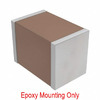 CGA4J3X8R2A333M125AD
CGA4J3X8R2A333M125AD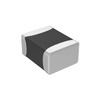 GRM32A7U3D151JW31D
GRM32A7U3D151JW31D GQM2195C2E151GB12D
GQM2195C2E151GB12D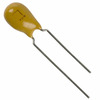 TAP155K050CRW
TAP155K050CRW S07K30
S07K30
- MAX5259EEE
- 80HCPS1848CBLGI
- PIC24HJ16GP304T-I/PT
- 6MBP30RTB060-01
- SKM22GD120D
- XC4VLX100-10FFG1148C
- TPS2553DRVT
- TLV4113MDGQREP
- STM32F207VCT7
- NCP81231MNTXG
- VL53L1CXV0FY/1
- DS14C88MX/NOPB
- DP83867ERGZT
- TMS320C6416TBGLZA8
- MC74AC02DR2
- DRV594VFP
- CLC5526MSAX/NOPB
- TJA1050T
- AM29F010-125JC
- CAT24M01YE-GT3
- CY22050FI
- CY2280PVC-1
- IDT74FCT3245Q8
- K4B2G1646C-HCKO000
- K4T1G164QD-ZCE6
- M24C16-RDW6T
- MJ4502
- NL111024EGU6-400
- S29GL128N10TFI01
- SAB82532H-V3.2A
- TEA1522T/N2+518
- TG110-S055N2
- XC9223B082ARN
- DA8-9355-PCA
- DAC8564IDPWRG4
- PIC32MX695F512L-80
- MDT10P65A2Q
- MT47H32M16FN-37EITD
- 1812CC563KAT3A